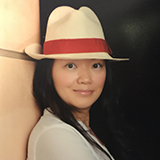May 2022 | Volume 23 No. 2
Leaders of Tomorrow
Entitled ‘The Leadership Development Course on Culture, Science and Society’, the programme aims to complement the hard skills undergraduates learn through formal education with soft skills such as concepts of leadership, working with others in teams and engaging with diverse people and unique ways of thinking.
The course, which is part of the new Bachelor of Arts and Sciences (BASc) degree programme which covers subjects across the Faculties of Arts, Science and Social Sciences, is designed to help students understand how their personal leadership growth may lead to fresh ideas and strategies which positively impact their university studies, their community, and their future career prospects.
“Soft skills are key to success for 21st-century graduates,” said Dr Helen Lockey, co-designer and co-instructor of the course. “We dovetail concepts of leadership and teamwork with the concepts of purpose, values and innovation, and also active listening – an oft-ignored aspect of leadership.”
While acknowledging that social distancing may have had a negative impact on some aspects of students’ personal growth, Dr Lockey points out that leveraging technology has resulted in a positive impact not only on students’ growth, but also their development. “We’re witnessing new ways of learning and teaching. The design principles we’ve upheld in course development is that the hands-on, tactile, on-campus experience must be replicated as far as possible in the virtual learning space. We leverage the most appropriate tech platforms in order to achieve this in-class experience, and in some respects, it’s as good as, if not better than the ‘real’ experience.
“The course has its own dedicated board on Miro, an online collaborative workspace. It’s been amazing how this platform has facilitated learning, group work and teaching. Student engagement, we believe, has been enhanced as a result of the way in which the course is designed and subsequently experienced.”

The course board, created on the Miro collaborative platform, facilitated learning, group work and teaching in the virtual learning space.
Cultural expertise
The cultural aspects of the course come in the Leadership in Practice part. Said Dr Marty Forth, Assistant Lecturer, Faculty of Social Sciences: “Students work in small groups to develop a product that increases the collective knowledge about one protected element of Hong Kong’s intangible cultural heritage (ICH). They ultimately become experts on this one aspect of Hong Kong’s rich cultural traditions after they write a proposal, do a literature review, and engage in creating something that celebrates that element of ICH. As part of the process, the students put their product out into the world and seek to understand the impact they have on educating others.”
ICH projects undertaken by students on this year’s course include: creating a DIY package on bamboo shed theatres; cheongsam or qipao making techniques; an HK Milk TEAm/Nai Cha Instagram page; an educational package on making tofu; a children’s book celebrating Chinese wedding ceremonies and puppetry; workshops on the Fusion of Chinglish and traditional Chinese Opera; and arranging public tasting events for Dragon Beard Candy.
“The key to this part of the project is coming up with strategies for conservation, preservation and awareness-raising,” said Dr Lockey. “Students are often seduced into the classic ‘Describe-it-to-me’ model of learning, where they simply tell you about a specific ICH. We expect much more than this: they have to deliver innovative strategies for ‘How-to-keep-it-alive’. They are guided towards this goal not only through the lessons, but also in group consultations where their ideas are critiqued, questioned and challenged. Many students leverage the power of social media to get the message out – some have been very innovative and experimental. But others have used good, old-fashioned face-to-face engagement. For example we had a group which reconceptualised traditional tofu recipes for the younger generation, made it and then served it in class. Brilliant!”
Every student completes the course with a Personal Leadership Development Plan (PLDP). “Each student writes goals for themselves,” explained Dr Forth. “Professional or career, academic and personal focussed goals for things they plan to achieve in their future. Each of these goals is then supplemented with required tasks with completion dates which detail more specifically how each goal will be completed.
“We have also learned that the most impactful part of the PLDP design process is the individualised one-on-one coaching that each student gets with a member of the course teaching staff. This support is designed around the student learning about themselves, being guided and supported in their decisions, and receiving mentoring. It is a key part of this course because all leaders need to learn to mentor and be mentored in return.”
Dr Forth explained that the PLDP can also be used by each student’s Faculty-assigned academic advisor as a conversation starter about what the student is seeking to do at HKU academically, and where they see themselves after graduation. “Why reinvent the wheel! Academic advisors can continue the conversation using the goals and tasks the student created as part of the class, and offer the student ongoing support and coaching.”
“This course is eclectic and thought-provoking,” said Dr Lockey in conclusion. “It’s also demanding, but we believe that the experience can be transformational.”

One of the intangible cultural heritage projects undertaken by students on the course was a children’s book Ying is Married celebrating Chinese weddings and puppetry.
Student engagement, we believe, has been enhanced as a result of the way in which the course is designed and subsequently experienced.

DR HELEN LOCKEY

